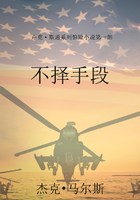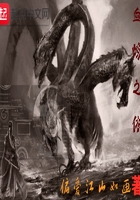FOREWORD BY ANGELA DAVIS
With this book, Creative Community Organizing: A Guide for Rabble-Rousers, Activists, and Quiet Lovers of Justice, Si Kahn has achieved an important feat. He has written a memoir, which is also a stirring account of some of the most important contemporary struggles for social justice. He has written a guide to community organizing practices, which is also a collection of inspiring stories that demonstrates how grassroots work can produce striking results. He offers us a written text, which is so thoroughly infused with music that the reader forgets sometimes that she is reading and not listening to (or singing along with) a charismatic song leader—like Pete Seeger, Jane Sapp, or Si Kahn.
As I write this foreword, Si Kahn's tenure as executive director of Grassroots Leadership is about to come to an end. I am not sure whether he planned the publication of this book to coincide with his retirement, but what a wonderful way of transitioning toward and encouraging new leadership of the organization. Si has entitled his book "Creative Community Organizing," and his notion of leadership encourages experimentation and ingenuity rather than the hierarchical relations that we usually think about when "leadership" is at issue. He ends the chapter entitled "Don't Just Study History—Make It" with an imperative that captures the heart of creative leadership: "Whatever else, we must always be careful not to stand between the people we work with and their impossible dreams."
This is also, I think, the overarching theme of the book. A radically transformed social world—with affordable housing, health care for all, and free education, for example—might seem to be an unachievable aspiration. However, as Si points out, the abolition of slavery seemed, in its day, an unattainable ideal, but also there were activists who did not allow the weight of the present to prevent them from fighting for the release of black slaves from bondage. He makes the more general point with these powerful words:
What I believe history does teach us is that in the broad struggle for justice you never really know what's possible and what's not. So, as creative community organizers, we need to be very careful not to limit the hopes and dreams of the people we work with. If we are not careful, our hardheaded "realism," historical "knowledge," and strategic "sensibility" may hold people back from taking on apparently unwinnable fights—that, if they are wise enough to ignore our advice, may instead turn out to be critical, deeply significant victories.
Within progressive circles, we have long wrestled with the meaning of cultural production and performance in relation to the mobilization of transformative mass movements and the development of radical political consciousness. Even though we frequently acknowledge that music, poetry, visual culture, and other modes of creative expression can play major roles in provoking new understandings of persisting social problems, we still tend to assume that it is through reasoned discourse— political analysis and speeches at rallies, for example—that the core issues related to social change are laid out. We assume that we fully learn, for example, through rational discourse, how to challenge homophobia and transphobia. It is also too frequently assumed that music, spoken word, guerrilla theater, film, etc. are simply important appendages to the ideas expressed in rational discourse, and can never be considered primary modes of political expression. These are the assumptions Si avidly disputes in Creative Community Organizing.
The key to understanding how Si Kahn envisions the role of culture in organizing for radical change resides in the significance of storytelling. He sees music, visual art, poetry, and theater as "the multiple methods human beings use to tell stories." Through these stories, we learn how to imagine ourselves as communities empowered to create change—to eradicate racism, anti-Semitism, sexism, and ableism, to overthrow homophobia, transphobia, and xenophobia. He argues that given the embeddedness of these ideologies and the material structures that anchor them, traditional political organizing cannot, by itself, succeed in forging genuine solidarity and community.
Thus Si Kahn relentlessly reminds us that building radical communities of struggle involves both the intellect and the emotions. The architecture of this book performs the very linkages of heart, mind, and spirit that he sees as the foundation of creative and effective organizing. The chapter entitled "Lift Every Voice," for example, tells the story of how he became an organizer and a songwriter and evokes the songwriters and singers he met, the places where he heard community singing, including black churches, where he listened to choirs singing the Negro National Anthem. We are moved by the stories he tells, we are transported by the lyrics he offers us, and we appreciate how a story about his own father's childhood in an Orthodox Jewish household can resonate far beyond that place and that moment. Having heard his father speak many times about being sent out by his mother every evening to forage for coal along the railroad tracks so that they would have a fire in the morning, Si assumed this was a story about poverty. But when he asked his father many years later about growing up poor, he was quickly corrected. Poor was not having enough to eat—and they had food on the table every day. This was a story about the triumph over poverty. This was a story about determination and dignity.
As an anti-prison activist for at least four decades, I deeply appreciate the care with which Si describes the campaigns Grassroots Leadership has undertaken against private, for-profit prisons, jails, and detention centers, and to end immigrant family detention, especially the incarceration of young children. Their challenges to private prisons have helped to generate new understandings of the extent to which high incarceration rates in the United States—in fact the highest in the world, along with the largest numbers of imprisoned populations in the world—are a direct reflection of corporate stakes in an expanding prison system. Corrections Corporation of America—the company Grassroots Leadership has targeted on many occasions—is the global leader of private, for-profit prisons. Examining the history of CCA and its attempts to develop private prisons throughout the world for the sole purpose of generating more profit also helps us to understand the incursion of for-profit companies into virtually every aspect of the public prison process—including health care, food preparation, communications, and all the things 2.3 million human beings behind bars are allowed by their keepers to have. In struggling to end this privatization and corporatization of punishment, some of us dream of a social landscape that will no longer rely on the prison.
I have read this book with a particular interest in discovering modes of creative organizing that will assist us in building a broader campaign for prison abolition. Others will read it in search of approaches to other political issues, hoping to identify strategies for building the mass movements that can negotiate the contradictions of our times. I can guarantee you that everyone who reads this book will experience moments of enlightenment and will be deeply moved by Si Kahn's passion for justice and by his commitment never to stand between people and their impossible dreams.
Angela Davis
University of California, Santa Cruz















